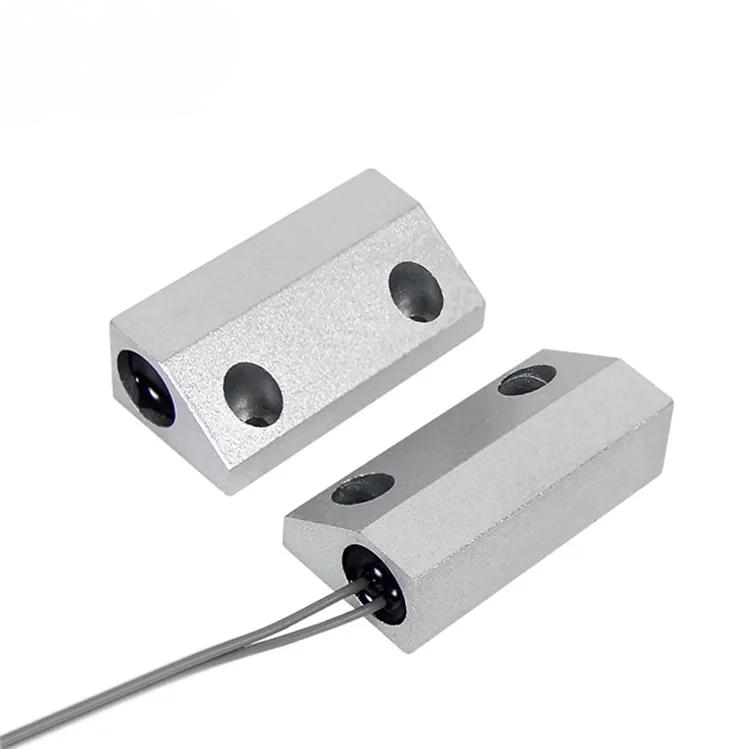Magnetic switches, also known as reed switches, are versatile and reliable components widely used in various industries for sensing and control applications. These devices operate based on the principles of magnetism, offering a simple yet effective way to detect the presence or absence of a magnetic field. In this blog, we’ll explore how magnetic switches work, their types, applications, and advantages.
What is a Magnetic Switch?
A magnetic switch is an electrical switch that is activated by a magnetic field. It typically consists of two ferromagnetic reeds (thin metal strips) enclosed in a glass or plastic tube. When a magnet is brought close to the switch, the reeds are magnetized and attract each other, closing the circuit. When the magnet is removed, the reeds spring back to their original position, opening the circuit.
How Do Magnetic Switches Work?
The operation of a magnetic switch relies on the interaction between the magnetic field and the ferromagnetic reeds. Here’s a step-by-step breakdown:
- Resting State: In the absence of a magnetic field, the reeds remain separated, and the switch is in an open state (no current flows).
- Activation: When a magnet is brought near the switch, the magnetic field causes the reeds to become magnetized. The opposite poles of the reeds attract each other, causing them to bend and touch, closing the circuit.
- Deactivation: When the magnet is moved away, the magnetic field weakens, and the reeds lose their magnetization. The inherent elasticity of the reeds causes them to return to their original position, opening the circuit.
Types of Magnetic Switches
Magnetic switches come in various configurations to suit different applications:
- Normally Open (NO): The switch remains open until a magnetic field is applied.
- Normally Closed (NC): The switch remains closed until a magnetic field is applied, which opens the circuit.
- Changeover (CO): Also known as a single-pole double-throw (SPDT) switch, it can switch between two circuits depending on the presence or absence of a magnetic field.
Applications of Magnetic Switches
Magnetic switches are used in a wide range of applications due to their reliability, durability, and simplicity. Some common uses include:
- Security Systems: Magnetic switches are often used in door and window sensors to detect unauthorized entry.
- Automotive Industry: They are used in speed sensors, brake systems, and fluid level detection.
- Home Appliances: Magnetic switches are found in washing machines, refrigerators, and microwave ovens for position sensing.
- Industrial Automation: They are used in proximity sensors, limit switches, and position detection systems.
- Medical Devices: Magnetic switches are used in equipment like MRI machines and infusion pumps for precise control.
Advantages of Magnetic Switches
- Reliability: Magnetic switches have no moving parts other than the reeds, making them highly reliable and long-lasting.
- Low Power Consumption: They require minimal power to operate, making them energy-efficient.
- Compact Size: Their small size allows for easy integration into various devices and systems.
- Sealed Design: The glass or plastic enclosure protects the reeds from dust, moisture, and corrosion, ensuring consistent performance in harsh environments.
- Fast Response Time: Magnetic switches can operate in milliseconds, making them suitable for high-speed applications.
Limitations of Magnetic Switches
While magnetic switches offer many benefits, they also have some limitations:
- Limited Sensing Range: They only work within a specific range of the magnetic field.
- Fragility: The glass enclosure can be fragile and may break under mechanical stress.
- Magnetic Interference: Strong external magnetic fields can interfere with their operation.
Conclusion
Magnetic switches are simple yet powerful devices that play a crucial role in modern technology. Their ability to detect magnetic fields with precision and reliability makes them indispensable in industries ranging from security to healthcare. Whether you’re designing a new system or troubleshooting an existing one, understanding how magnetic switches work can help you make the most of their capabilities.
If you’re considering using magnetic switches in your next project, be sure to evaluate the specific requirements of your application to choose the right type and configuration. With their versatility and durability, magnetic switches are sure to deliver excellent performance in a wide range of scenarios.

